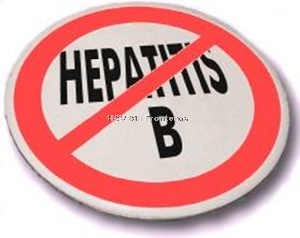 Hepatitis B is a potentially life-threatening liver infection
Hepatitis B is a potentially life-threatening liver infection
New World Health Organisation (WHO) data from 28 countries representing approximately 70 per cent of the global hepatitis burden indicate that efforts to eliminate hepatitis are gaining momentum.
Published to coincide with the World Hepatitis Day on July 28, the data revealed that nearly all 28 countries have established high-level national hepatitis elimination committees (with plans and targets in place) and more than half have allocated dedicated funding for hepatitis responses.
The new report was made available to the Ghana News Agency by Tunga Namjilsuren, the Information Manager, WHO Department of HIV and Global Hepatitis Programme, to commemorate the 2017 World Hepatitis Day, on the theme: "Eliminate Hepatitis."
The Day is to mobilise action towards the final elimination goal for hepatitis included in the 2030 Sustainable Development Goals (SDGs).
Hepatitis B is a potentially life-threatening liver infection caused by the hepatitis B virus (HBV).
It is a major global health problem. It can cause chronic infection and puts people at high risk of death from cirrhosis and liver cancer.
“On this World Hepatitis Day, WHO is calling on countries to continue to translate their commitments into increased services to eliminate hepatitis,” the statement said.
This week, WHO has added a new generic treatment to its list of WHO-prequalified hepatitis C medicines to increase access to therapy, and is promoting prevention through injection safety: a key factor in reducing hepatitis B and C transmission.
"It is encouraging to see countries turning commitment into action to tackle hepatitis," said Dr Tedros Adhanom Ghebreyesus, WHO Director-General.
"Identifying interventions that have a high impact is a key step towards eliminating this devastating disease. Many countries have succeeded in scaling-up the hepatitis B vaccination. Now we need to push harder to increase access to diagnosis and treatment," he said.
In 2016, the World Health Assembly endorsed WHO’s first global health sectors’ strategy on viral hepatitis to help countries scale up their responses.
The new WHO data shows that more than 86 per cent of countries reviewed have set national hepatitis elimination targets and more than 70 per cent had begun to develop national hepatitis plans to enable access to effective prevention, diagnosis, treatment and care services.
It said nearly half of the countries surveyed were aiming for elimination through providing universal access to hepatitis treatment.
It said, however, that WHO was concerned that progress needed to speed up.
"The national response towards hepatitis elimination is gaining momentum. However, at best one in 10 people who are living with hepatitis know they are infected and can access treatment. This is unacceptable," said Dr Gottfried Hirnschall, WHO's Director of the HIV Department and Global Hepatitis Programme.
The report said viral hepatitis affected 325 million people worldwide in 2015, with 257 million people living with hepatitis B and 71 million people living with hepatitis C - the two main killers of the five types of hepatitis.
It indicated that viral hepatitis caused 1.34 million deaths in 2015, a figure close to the number of TB deaths and exceeding deaths linked to HIV.
The report said hepatitis C could be completely cured with direct acting antivirals (DAAs) within three months.
However, as of 2015, only seven per cent of the 71 million people with chronic hepatitis C had access to treatment.
“WHO is working to ensure that DAAs are affordable and accessible to those who need them,” it said, adding that prices had dropped dramatically in some countries, facilitated by the introduction of generic versions of those medicines.
WHO had just pre-qualified the first generic version of one of those drugs: sofosbuvir with an average price of the required three-month treatment course being between 260 and 280 dollars, a small fraction of the original cost of the medicine when it first went on the market in 2013.
The report said with high morbidity and mortality globally, there was great interest also in the development of new therapies for chronic hepatitis B virus infection.
It said the most effective current hepatitis B treatment – tenofovir - was available for as low as 48 dollars per year in many low and middle income countries and called for the scaling up of access to testing.
It said the use of contaminated injection equipment in health-care settings accounted for a large number of new HCV and HBV infections worldwide, making injection safety an important strategy.